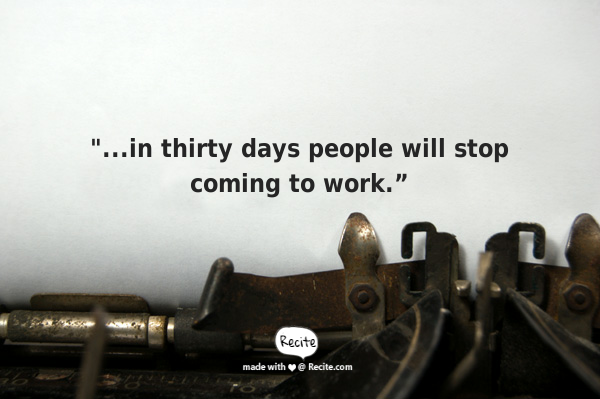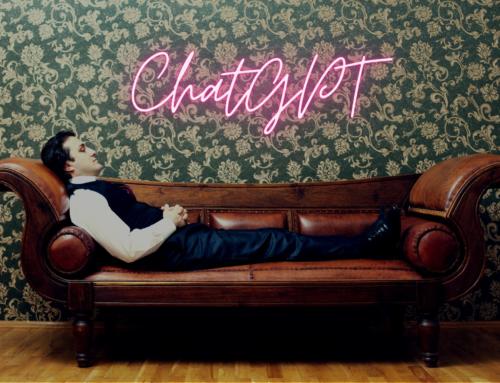It was the beginning of summer. I did not particularly enjoy riding the subway this time of year. It was blisteringly hot. However, it was the quickest way to get around the city. Traffic had become a year-round nightmare in New York City.
“Hey John,” he said. “Are you ready for this?”
“I better be, we need to get this done,” I replied after wiping a bead of sweat from my forehead.
Turning to the large counter in the gleaming, white marble lobby, I fixed my gaze on one of the security personnel and said, “Good morning ma’am. We are here to visit Beecroft Financial. We have an appointment to see Mr. Van Jones.”
“Absolutely sir. Do you have ID?” she said. “When you are ready, please look directly into the camera and smile.”
While I waited for the big apple’s standard security process, I flashed back to the events that led to this crucial meeting…
About twelve months prior, my sales team signed one of the largest enterprise contracts in the history of our company. It was a grueling negotiation, but it closed in less than six months; that is light speed in the financial services industry. It had also been over six months since our last deal. We were so excited to share the news. We called an impromptu all-hands meeting accompanied by champagne and snacks. (Champagne was a tradition we started when we signed our first customer. We would toast, congratulate the deal team, and then all employees would sign a champagne box labeled with the new client’s name and date. We now have many of them in our offices.) This new multi-million-dollar deal would allow us to grow our team, invest in our product, and develop another successful case study. We were excited.
Eight months in, we were in hell. We were overwhelmed with customizations, complex integrations, and core product enhancement requests. We cycled through program managers, developers, and business analysts at an alarming rate. We burned out team members so fast; I began referring to the project as “Vietnam.” The project was fixed-priced. We were bleeding cash. My quarterly reviews with our board were the most challenging since our company’s inception. It was maddening. We needed this client to succeed, but it would likely bankrupt us before we could get it done. The spirit of the team was at an all-time low. We needed to get out!
“Sir. Sir!” said the security woman who was now somewhat annoyed.
“Sorry about that. I was daydreaming,” I said, embarrassed by the exchange.
“You can head up to reception on the 28th floor. Have a delightful day.”
My colleague and I made our way through the security gates and headed up on a gold-plated turbo elevator to the most important meeting of our company’s history. We did not say a word to each other. We were both, clearly, in deep thought about how we would approach this meeting.
We met Van Jones in Beecroft’s board room. It was a vast space, all-glass, anointed with leather seats, a mahogany conference table, and a state-of-the-art in-room video conferencing system. One wall featured a world map etched in the glass with black dots depicting each of their various office locations worldwide. Beecroft is a global risk management organization with more than 4,000 employees. Their revenue is in the multiple billions, and they have the most market share in their chosen segments. At the time, the implementation of our solution was one of their top three strategic initiatives. They needed scalable and profitable growth. Their CEO received monthly briefings on the initiative’s progress, and it was not always good news. Van Jones, a thin, fit Texan with a degree from UT Austin and the company’s youngest CIO in history, received his fair share of grueling questions and ultimatums. He was not in a good mood and was glad we came to visit. He was prepared to give us an ear full.
After the requisite pleasantries, Van opened the meeting with, “I am glad ya’ll are here. I have my team waitin’ to join us in a few. We have some serious issues to resolve if we plan on makin’ our next milestone.”
I took a deep breath and said, “Van, thank you for taking the time to meet with us today. I don’t believe we’ll need the rest of the team for this discussion.”
He glanced at my colleague, who gave him a blank stare.
“Heck. What’s on your mind, gents?”
I then reached into my briefcase and pulled out a bottle of Pepto Bismal® and placed it in the middle of the table. I bought the multi-purpose pink tummy soother just for this occasion. It was intended for me, but I decided to introduce it as an impromptu attendee to the meeting.

“What I am about to share will come with some indigestion, and you’re going to need this when we are done today,” I explained with a hint of levity.
“Uh oh. Go on ahead, John. Let’s hear it,” said Van.
“Over a year ago when we signed on to be your partner on this project, we did not expect the challenges we are facing now. Unfortunately, the deal we signed up for is no longer working for us. In fact, it is killing us!”
Van Jones’s face went pale, and he glanced at the pink bottle for a split second. Without skipping a beat, I kept talking. I explained in excruciating detail how deadly this program had become for us. I ended by sharing the fact that, unless we could work something out, we were prepared to walk away.
When I finally gave him the floor to speak, he said grimly, “Well I didn’t expect to hear that. Heck, I feel like you just grabbed my hand and smashed my knuckles with a hammer and asked me if it hurts. But, look here, this is a partnership, and we both don’t need this right now. We’ll need to work somethin’ out for sure.” He then paused for a moment, taking a deep breath, “I need to ask this here… How much time do we have?”
“Van, in thirty days people will stop coming to work.”
The above is a fictionalized version of real events that took place at the midpoint of my company’s journey to market leadership. Several months after that New York meeting, we “righted the ship” and put the program on a path to success and financial stability. It was a collaborative effort requiring trust and creativity from both sides. More importantly, we saved the relationship with our client.
When I look back, that was one of the toughest conversations I have ever had with a customer. Plus, it was crucial in so many ways. It reinforced the fact that we were in a partnership and needed to help each other succeed. It helped our company to redesign our implementation processes. We architected our contracts to prevent this in the future. Finally, it helped us rewrite the book on our customer communications process. To this day, anytime I pass a display case filled with the pink stuff at a pharmacy, I remember the Beecroft meeting and shake my head.
Strong customer relationships are the underpinnings of a successful business. Keeping those bonds firm requires crucial conversations. Besides, as I learned from Beecroft and others, a robust dialogue can save the day, just when you think you’ll lose everything.

Sometimes this skill is learned from dealing with a crisis, but this doesn’t have to be the case. You can build this “muscle memory” by practicing these conversations on a regular basis. In fact, this is a talent every CEO must master. Start tomorrow, when you don’t need help with “Nausea, heartburn, indigestion, upset stomach, diarrhea.”


